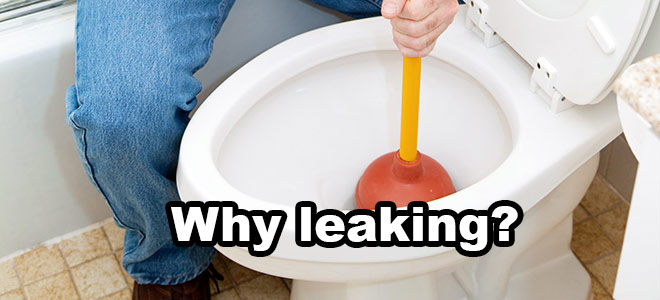There are a myriad of problems that toilets face across the City of Toronto, and we’ve decided to put together here for you a list of the most common Toronto toilet troubles and what, if anything, you can do about them.
Water Running Inside Of the Toilet Tank
One common problem that older toilets face is the sound of water running constantly in the tank. This is usually characterized as the sound you hear after you flush the toilet of the tank refilling but it never quite seems to stop. There are a few suspects that might be causing this problem namely the ballcock, the refill tube, and the inlet-valve assembly. The sound that you hear is usually a result of water coming through the inlet valve into the tank.
You’ll want to first take a good look at the float, sometimes it’s simply stuck and a quick adjustment will fix the problem. The next area you should take a look at is the refill tube, double-check that the refill tube is not installed to far inside of the overflow tube, make sure it’s only about ¼” below the top. If those areas look good the final suspect in this issue would be the ballcock, replacing the assembly should take care of this issue.
Clogged Toilet
Just about everyone who uses a toilet has experienced this problem (for those of you that don’t use toilets, this is a common occurrence!). You do you your business, flush the toilet, and watch in suspense and horror as the bowl fills to the brim – if you’re having an especially unlucky day you can also watch as your toilet overflows onto your bathroom floor. Solving a toilet clog is usually pretty easy.
If you give the overflowed bowl a bit of time it will typically slowly drain to more manageable levels, then get your force cup plunger out, insert it into the toilet drain and give it a solid push. This will force the water and debris down the drain, typically this is enough to unclog a toilet but in those rare circumstances when the clog is as a result of a hard physical object (we’ve pulled paint scrapers out of toilets before) you’ll need a drain snake to really bust the clog. This might be a good time to call on a plumber that offers drain cleaning services.
Weak Flush or Toilet Bowl Flushes Slowly
Another very common problem with toilets is after flushing they do not refill very quickly. People usually refer to this problem as a weak flush and it can usually be traced to the clogged flush holes. These are the holes that provide a route for water to travel from the tank into the bowl, causing the flushing process to happen.
Get a small mirror and a wire coat-hangar, using the mirror examine underneath the inside edge of your toilet bowl rim, you should see the flush holes clearly, bend the coat-hangar into a poker tool and poke it inside of the flush holes to make sure there is nothing clogging them. You’ll want to use some caution with the coat-hangar to make sure you don’t scratch the surface of the toilet bowl.
Leaking Seals
Another aspect of your toilet that can become very troublesome is leaking seals. The common toilet actually has five seals that can all fail and cause a leaky toilet in one way or another. The solution to this problem is fairly simple, find the seal that’s leaking and replace it. The first place you’ll want to check is the seal between the tank and the bowl, being the largest seal if this one has a problem you’ll end up with a fairly large leak that will make itself known every time you flush the toilet. You’ll need to drain the tank and remove it from the bowl in order to replace this one.
Another large seal is located at the base of the toilet and seals the flange to the toilet base. A problem with this seal can cause a lot of water damage, and a small leak can go unnoticed, so if you find a problem with this seal it’s a good idea to investigate your bathroom for signs of damage. You’ll need to remove the toilet from the floor to examine and replace this seal.
There are a few smaller sized seals located at the base of the ballcock and the mounting bolts, examine these areas carefully for signs of leakage. You’ll need to replace these in a similar fashion to the other one.

